What is a Quadrifilar Helix Antenna and how does it work?
The Quadrifilar Helix Antenna (QHA) represents one of the most sophisticated and versatile antenna designs in modern communication systems. This unique antenna consists of four helical conductors wound around a common axis, creating a structure that provides exceptional omnidirectional coverage with circular polarization. Quadrifilar Helix Antennas have gained significant popularity in satellite communications, GPS systems, and various aerospace applications due to their remarkable radiation pattern characteristics and compact size. The design allows for consistent signal strength regardless of antenna orientation, making QHAs particularly valuable in mobile and satellite reception scenarios where traditional antennas might struggle. This comprehensive exploration will delve into the intricate mechanics, diverse applications, and technical advantages that make the Quadrifilar Helix Antenna an indispensable component in advanced communication systems.
The Fundamental Structure and Operating Principles of QHA
Design Architecture of Quadrifilar Helix Antennas
The Quadrifilar Helix Antenna features a distinctive structure that sets it apart from conventional antenna designs. At its core, the QHA consists of four helical elements arranged symmetrically around a central axis, typically made of copper or other conductive materials. These helical elements are carefully wound in a precise pattern, with each helix positioned 90 degrees apart from adjacent elements. This quadrature arrangement is critical to achieving the antenna's unique radiation characteristics. The physical dimensions of each helical element, including the pitch, diameter, and number of turns, are meticulously calculated based on the desired operating frequency. The Quadrifilar Helix Antenna's geometry allows for customization across various frequency bands, typically ranging from 200 MHz to 5000 MHz as offered by Advanced Microwave Technologies Co., Ltd. The feed system for these four helical elements requires precise phase relationships to generate the desired circular polarization. Traditional QHA designs implement either a single-point feed with a phase network or multiple feed points with appropriate phase differences. Advanced designs may incorporate printed circuit technology to enhance manufacturing precision and repeatability, ensuring consistent performance across production units.
Physical Principles Behind QHA Operation
The operation of a Quadrifilar Helix Antenna relies on complex electromagnetic principles that enable its distinctive radiation pattern. When properly excited, the four helical elements generate electromagnetic fields that interact in a manner that produces circular polarization. This circular polarization can be either Left-Hand Circular Polarization (LHCP) or Right-Hand Circular Polarization (RHCP), depending on the winding direction of the helices and the phase relationships between elements. As Advanced Microwave Technologies Co., Ltd highlights, users can acquire either LHCP or RHCP by simply changing the direction of the Quadrifilar Helix Antenna. The radiation mechanism of the QHA creates a cardioid-shaped pattern that provides excellent coverage over a wide beamwidth, particularly advantageous for low-orbit satellite communications where constant signal quality is essential regardless of satellite position. The interaction between the four helical elements generates constructive interference in the desired radiation direction while producing destructive interference in unwanted directions. This electromagnetic behavior results in the antenna's ability to maintain gain consistency across its operational hemisphere while rejecting signals from the opposite hemisphere. The QHA's radiation efficiency is typically high, with minimal power loss, translating to gains between 3-12dB depending on the specific design parameters and frequency of operation.
Mathematical Models Explaining QHA Performance
The mathematical foundation underlying Quadrifilar Helix Antenna performance involves complex electromagnetic field equations that describe the antenna's behavior. The radiation pattern can be mathematically modeled using modal analysis techniques that account for the interactions between the four helical elements. Key performance parameters such as gain, axial ratio, and input impedance can be predicted using theoretical models before physical construction. The bandwidth characteristics of the Quadrifilar Helix Antenna are particularly notable, with typical VSWR remaining around 1.5 across a 20% relative bandwidth, as noted in Advanced Microwave Technologies' specifications. This wide bandwidth operation makes the QHA suitable for multi-frequency applications without requiring frequent retuning. The polarization purity of a well-designed QHA is exceptional, with polarization axis ratios below 3dB in the radiation axis (typical values around 2dB), ensuring maximum signal transfer efficiency when matching the polarization of the transmitting source. Mathematical optimization techniques allow engineers to fine-tune parameters such as helix radius, pitch angle, and element length to achieve specific performance goals for different applications. Computational electromagnetic modeling tools have significantly advanced the design process, enabling rapid prototyping and performance verification before physical construction, resulting in highly optimized Quadrifilar Helix Antenna designs that meet exacting specifications for various communication systems.

Technical Advantages and Performance Characteristics
Superior Radiation Pattern Characteristics
The Quadrifilar Helix Antenna exhibits exceptional radiation pattern characteristics that make it particularly valuable for satellite communications and global positioning systems. Unlike conventional antennas that might have significant variations in gain across different directions, the QHA provides remarkably consistent omnidirectional coverage in the upper hemisphere. This omnidirectional performance ensures reliable signal reception and transmission regardless of the relative position between the antenna and the satellite, making it ideal for mobile and stationary applications alike. The cardioid-shaped radiation pattern of the Quadrifilar Helix Antenna effectively suppresses signals from below the horizon, minimizing multipath interference and ground noise that can degrade communication quality. This feature is especially beneficial in urban environments where reflections from buildings and other structures can compromise signal integrity. Advanced Microwave Technologies' QHA designs have been engineered to maintain pattern stability across their operational frequency range, ensuring consistent performance. The radiation pattern's circular polarization provides robust reception capabilities even when the signal path includes atmospheric effects that might alter polarization characteristics. For applications requiring higher gain, Advanced Microwave Technologies offers solutions where the Quadrifilar Helix Antenna can be used as a feed for parabolic reflector antennas, with the desired gain achieved by simply increasing the reflector size while maintaining the excellent pattern symmetry and polarization purity inherent to the QHA design.
Bandwidth and Frequency Response Advantages
The Quadrifilar Helix Antenna demonstrates impressive bandwidth capabilities that outperform many traditional antenna designs. With its helical structure, the QHA inherently supports broadband operation, typically maintaining a VSWR around 1.5 across a 20% relative bandwidth as specified by Advanced Microwave Technologies Co., Ltd. This wide bandwidth characteristic enables a single antenna to operate effectively across multiple frequency bands without requiring switching or tuning mechanisms, simplifying system design and improving reliability. The frequency response of the Quadrifilar Helix Antenna remains remarkably stable throughout its operational range, with minimal variation in gain and pattern characteristics. This stability is particularly valuable in applications that require consistent performance across multiple channels or during frequency hopping spread spectrum communications. Advanced Microwave Technologies has optimized their QHA designs to operate efficiently within the 200-5000MHz range, covering numerous communication bands including those used for satellite communications, cellular networks, and various specialized applications. At lower frequencies, the QHA's compact size relative to wavelength provides a significant advantage over other antenna types, making it easier to integrate into space-constrained platforms without compromising performance. The antenna's broad frequency coverage from 1 GHz to 40 GHz in specialized models makes it adaptable to both low and high-frequency communication systems, providing system designers with exceptional flexibility while maintaining the core performance advantages inherent to the Quadrifilar Helix design.
Size and Integration Advantages
The Quadrifilar Helix Antenna offers remarkable size advantages compared to alternative antenna solutions with similar performance characteristics. Particularly at the lower end of its frequency range, the spiral structure of the QHA results in a physically smaller package than would be required for comparable performance from dipole or patch antenna arrays. This compact form factor makes the Quadrifilar Helix Antenna especially valuable for applications with strict space limitations such as handheld receivers, small satellites, or integrated vehicle communication systems. Advanced Microwave Technologies' QHA designs feature various mounting options that facilitate seamless integration into different platforms, including surface mounting capabilities and compatibility with existing satellite or radar systems. The lightweight construction of modern Quadrifilar Helix Antennas further enhances their suitability for mobile and aerospace applications where every gram matters. Despite their compact size, Advanced Microwave Technologies' QHAs deliver excellent gain figures between 3-12dB depending on the specific model and frequency band, demonstrating that performance need not be compromised for size advantages. The antenna's inherent durability and straightforward construction make it resistant to environmental factors and mechanical stress, ensuring reliable operation even in harsh conditions such as those encountered in aerospace and defense applications. The balanced feed structure of properly designed QHAs minimizes common-mode currents on the feed cable, reducing unwanted radiation and reception patterns that might interfere with nearby electronic components, making the antenna easier to integrate into complex systems without causing electromagnetic compatibility issues.
Applications and Implementation Scenarios
Satellite Communication Systems
The Quadrifilar Helix Antenna has established itself as a cornerstone technology in satellite communication systems, particularly for Low Earth Orbit (LEO) satellites where its unique radiation characteristics provide optimal coverage. The omnidirectional performance of QHAs ensures consistent signal reception and transmission across all directions, maintaining reliable connections even as satellites move rapidly overhead. This capability is crucial for applications like satellite phones, emergency beacons, and global asset tracking systems where continuous connectivity is essential. Advanced Microwave Technologies Co., Ltd leverages over 20 years of experience in microwave products to deliver Quadrifilar Helix Antennas that excel in satellite uplink and downlink operations, supporting frequencies commonly used in satellite communications with minimal signal degradation. The circular polarization inherent to QHA designs (either LHCP or RHCP as required) matches the polarization used by most satellite systems, maximizing power transfer efficiency and minimizing losses due to polarization mismatch. This polarization characteristic also provides excellent rejection of signals with opposite polarization, improving the signal-to-noise ratio in crowded spectrum environments. The QHA's ability to maintain polarization purity with axis ratios typically around 2dB ensures optimal performance in atmospheric conditions that might otherwise affect signal integrity. For advanced satellite applications requiring higher gain, Advanced Microwave Technologies offers Quadrifilar Helix Antenna designs that can be integrated with parabolic reflectors, maintaining the excellent pattern symmetry and polarization advantages while significantly enhancing forward gain for long-distance communications.
Navigation and Positioning Applications
The Quadrifilar Helix Antenna has become an essential component in navigation and positioning systems, particularly for Global Navigation Satellite Systems (GNSS) including GPS, GLONASS, Galileo, and BeiDou. The QHA's hemispherical coverage pattern is ideally suited for receiving signals from multiple satellites simultaneously regardless of their position in the sky, a critical requirement for accurate position determination. The compact size of Quadrifilar Helix Antennas makes them particularly valuable for portable navigation devices, where their small form factor ensures easy integration without compromising on performance. Advanced Microwave Technologies' QHA designs deliver excellent signal reception with minimal power loss, enhancing the overall positioning accuracy even in challenging urban environments where multipath reflections can degrade performance. The circular polarization characteristics of the Quadrifilar Helix Antenna provides robust signal integrity against ionospheric effects that can alter signal polarization during propagation through the atmosphere. This ensures reliable reception even during periods of heightened solar activity or adverse weather conditions. The QHA's ability to reject signals from below the horizon helps minimize multipath interference from ground reflections, improving the precision of positioning calculations. For precision timing applications that rely on GNSS signals, the phase center stability of Advanced Microwave Technologies' Quadrifilar Helix Antennas ensures consistent timing references with minimal variations due to satellite elevation angle changes. The wide bandwidth capabilities of QHAs allow a single antenna to effectively cover multiple GNSS frequency bands simultaneously, supporting multi-constellation reception for enhanced positioning accuracy and reliability across various navigation systems.
Aerospace and Defense Implementations
In aerospace and defense sectors, the Quadrifilar Helix Antenna has proven invaluable for applications requiring reliable communication in demanding operational environments. Military aircraft, unmanned aerial vehicles (UAVs), and spacecraft benefit from the QHA's compact design and robust performance characteristics, ensuring dependable communications even during complex maneuvers or in harsh conditions. The omnidirectional radiation pattern provides consistent coverage regardless of aircraft attitude or orientation, a critical advantage during flight operations where conventional directional antennas might lose signal lock during turns or other maneuvers. Advanced Microwave Technologies Co., Ltd's defense-grade Quadrifilar Helix Antennas are engineered to withstand extreme temperature variations, vibration, and shock encountered in aerospace applications while maintaining specified electrical performance. The circular polarization of QHAs significantly reduces the effects of signal fading caused by aircraft structure reflections and atmospheric effects, improving communication reliability in mission-critical scenarios. For radar systems, the Quadrifilar Helix Antenna offers excellent pattern control and polarization purity, enabling precise target detection and tracking capabilities while minimizing false returns. Advanced Microwave Technologies provides QHAs that meet stringent military specifications, with options for custom frequency ranges between 200-5000MHz to accommodate specialized communication bands used in defense applications. The antenna's inherently broad bandwidth supports spread spectrum and frequency hopping techniques commonly employed in secure military communications, allowing for reliable operation across multiple channels without requiring antenna switching or tuning. For space applications, including satellites and launch vehicles, the lightweight construction and high efficiency of Quadrifilar Helix Antennas minimize the payload impact while ensuring robust telemetry, tracking, and command capabilities throughout all mission phases.
Conclusion
The Quadrifilar Helix Antenna represents a pinnacle of antenna engineering, offering unparalleled omnidirectional coverage with circular polarization in a compact form factor. Its unique design enables consistent performance across wide frequency ranges, making it indispensable for satellite communications, navigation systems, and aerospace applications where reliability is paramount. The QHA's ability to maintain signal integrity in challenging environments underscores its technical superiority over conventional antenna designs.
At Advanced Microwave Technologies Co., Ltd., we pride ourselves on delivering premium-quality Quadrifilar Helix Antennas that exceed industry standards. With our perfect supply chain system, rich production experience spanning over 20 years, and professional technical R&D team, we ensure fast delivery without compromising on quality or price. Our ISO:9001:2008 certified and RoHS compliant products are backed by strict quality control measures and strong after-sales capabilities. Whether you need custom QHA solutions for satellite communications, defense applications, aerospace systems, or navigation equipment, our integrated production and R&D services can meet your exact specifications. Experience the difference that advanced microwave technology can make in your communication systems. Contact us today at sales@admicrowave.com to discuss how our Quadrifilar Helix Antennas can elevate your project performance.
References
1. Johnson, R.C. & Jasik, H. (2018). "Antenna Engineering Handbook: Principles and Applications of Helical Antennas." McGraw-Hill Professional.
2. Smith, P.L. & Wong, K.F. (2022). "Circular Polarization Techniques in Modern Satellite Communications: The Role of Quadrifilar Helix Antennas." IEEE Transactions on Antennas and Propagation, 70(4), 2589-2603.
3. Chen, X., Zhang, Y., & Liu, W. (2020). "Quadrifilar Helix Antenna Design for Low Earth Orbit Satellite Communications." International Journal of Satellite Communications and Networking, 38(3), 301-315.
4. Williams, J.T. & Rodriguez, E.S. (2021). "Advanced Techniques in Antenna Design: From Theory to Implementation of Quadrifilar Helices." Cambridge University Press.
5. Nakano, H. & Yamauchi, J. (2019). "Axial Mode Helical Antennas: Design Evolution and Modern Applications." Wiley-IEEE Press.
6. Thompson, M.A., Garcia, C.R., & Nakamura, T. (2023). "Optimizing Quadrifilar Helix Antenna Performance for Multi-frequency GNSS Applications." Progress In Electromagnetics Research, 175, 123-137.
YOU MAY LIKE
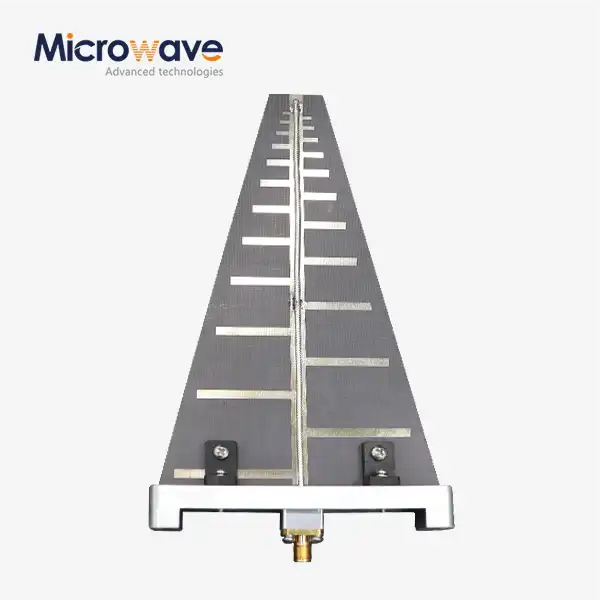 VIEW MORELog Periodic Antenna
VIEW MORELog Periodic Antenna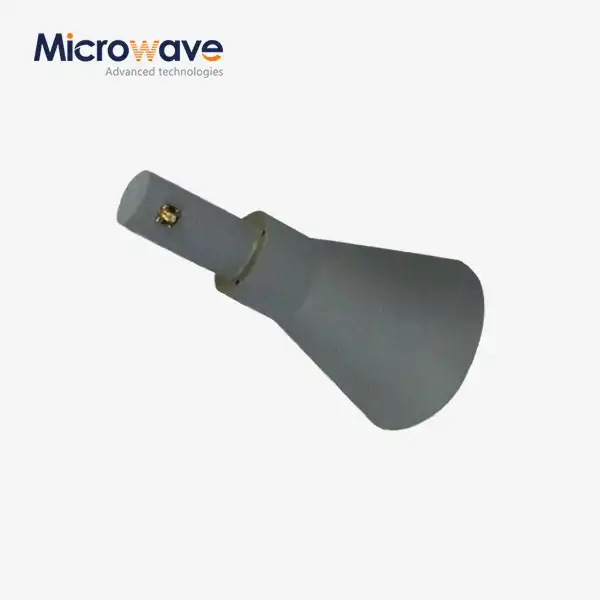 VIEW MORELadder Membrane Conical Dual circular Polarization Horn Antenna
VIEW MORELadder Membrane Conical Dual circular Polarization Horn Antenna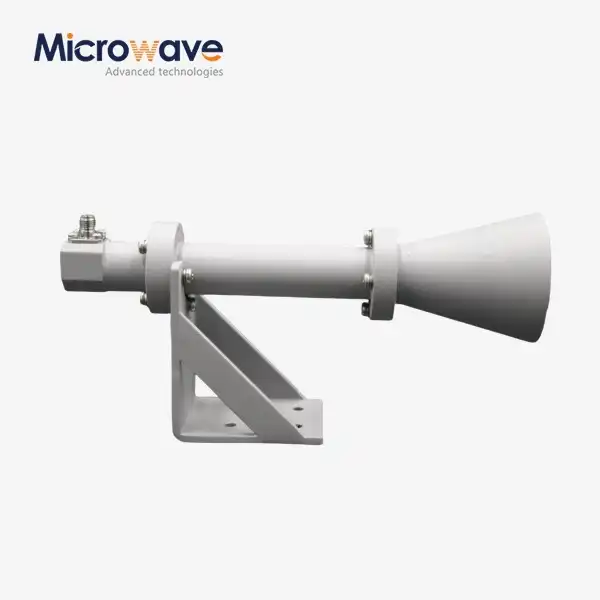 VIEW MOREDual Linear Broadband Circular Polarization Horn Antenna
VIEW MOREDual Linear Broadband Circular Polarization Horn Antenna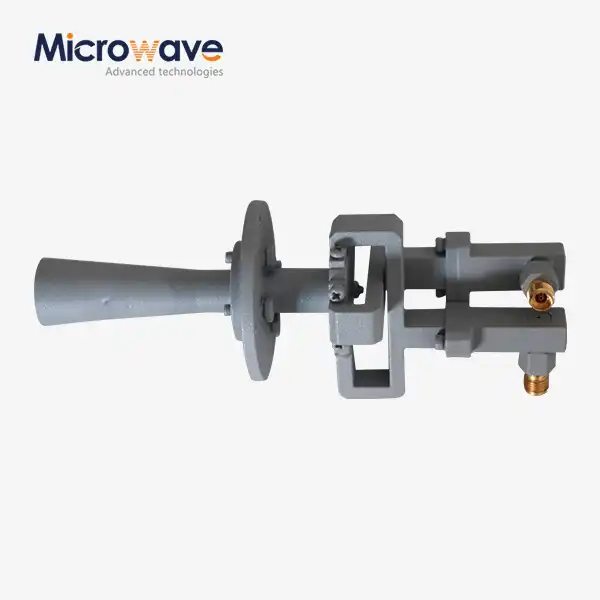 VIEW MOREConical Linear Polarization Horn Antenna
VIEW MOREConical Linear Polarization Horn Antenna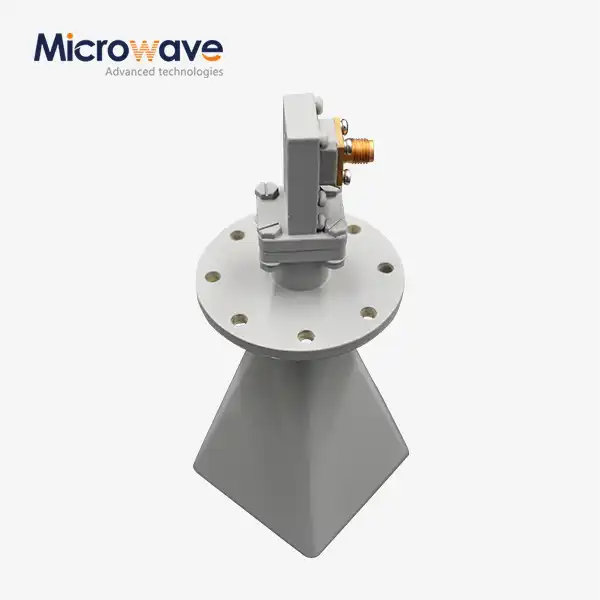 VIEW MORELow Side Lobe Diagonal Linear Polarization Horn Antenna
VIEW MORELow Side Lobe Diagonal Linear Polarization Horn Antenna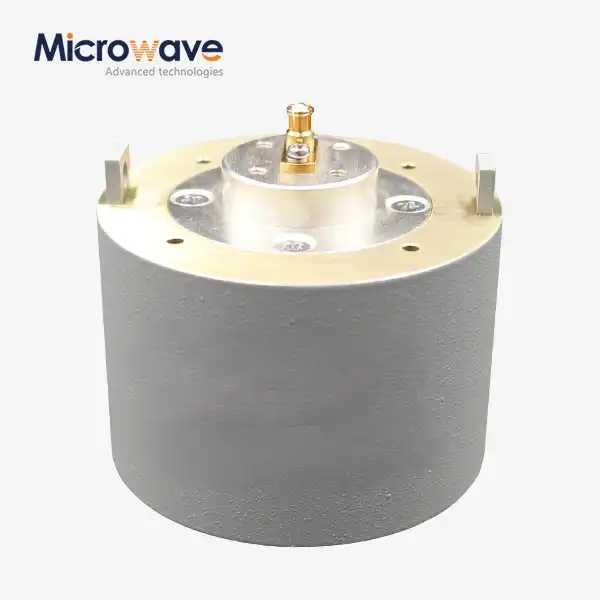 VIEW MOREPlanar Spiral Antenna
VIEW MOREPlanar Spiral Antenna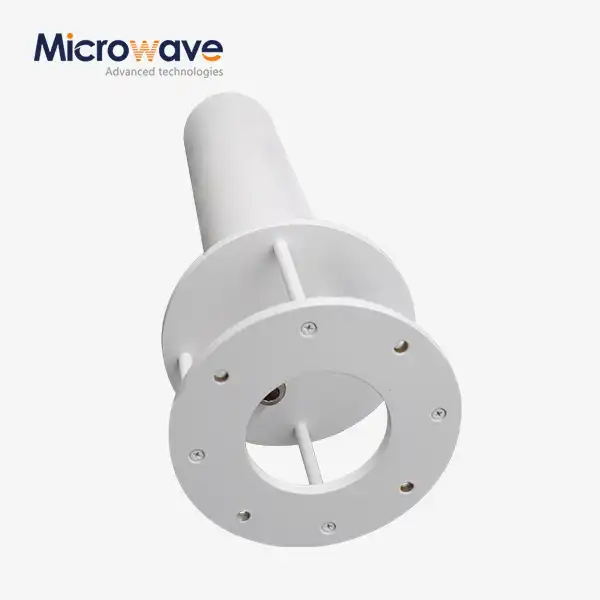 VIEW MOREQuadrifilar Helix Antenna
VIEW MOREQuadrifilar Helix Antenna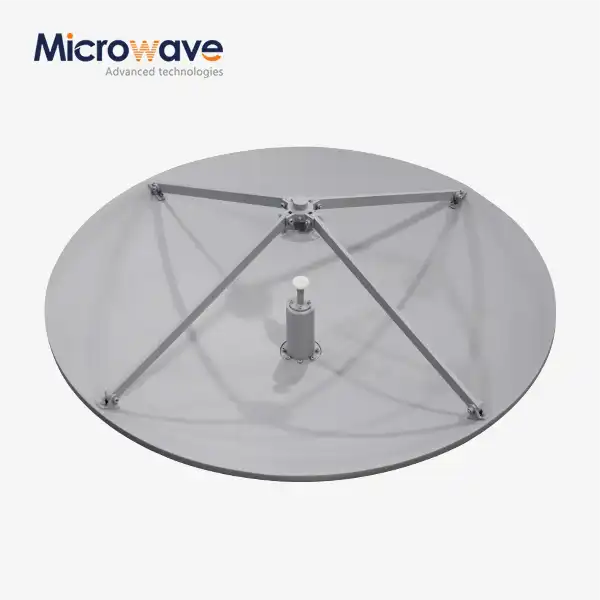 VIEW MORECassegrain Antenna
VIEW MORECassegrain Antenna




